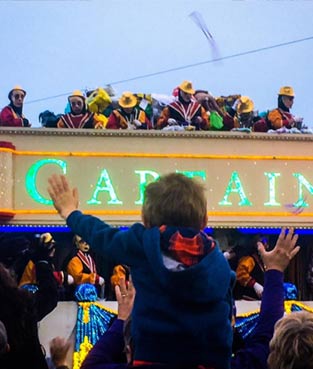CBD & Warehouse District
The Central Business District (CBD) in New Orleans is what most cities call their downtown.
The CBD is the hub for more than just business in New Orleans. In addition to the sky scrapers, you can find popular destinations like the Superdome where the Saints play and the Ernest N. Morial Convention Center.
It also home to retail locations, popular bars and restaurants, premier art galleries and residents inhabiting restored historic commercial and industrial buildings.
The CBD encompasses, the American Sector, the area the American’s settled in after the United States took over control the city. The CBD's boundaries as defined as Iberville, Decatur and Canal Streets to the north, the Mississippi River to the east, the New Orleans Morial Convention Center, Julia and Magazine Streets and the Pontchartrain Expressway to the south, and South Claiborne Avenue, Cleveland and South and North Derbigny Streets to the west.
One side note, Canal Street is most commonly thought of the dividing line between the French Quarter and the American Sector, technically both side of the street are considered part of the CBD for regulatory and zoning purposes.
Central Business District History
The Central Business District was already known as Faubourg Ste. Marie. It was originally settled in the 18th century as a residential area.
In the 19th and well into the 20th century, the area was going through constant development. My mid-20th century, the majority of professional offices in the region were located in the CBD. Canal Street developed into a retail destination for that city’s residents and those living in near by cities. Theaters and movie palaces took up residence, the Saenger, Loews State, Orpheum, Joy and Civic decorated the city with their multicolored lights.
In the 1950’s and 60’s, a number of construction projects were completed including a six-lane Loyola Avenue, an extension of Elk that cut through a low-income resident district and became home to the city’s new civic center. Poydras Street was widened to create another six-lane arterial for vehicle traffic, as well as accommodate the sky scraper construction.
The Warehouse District
The Warehouse District name comes from the warehouse and manufacturing industry that once filled the section of the CBD closest to the Mississippi River and south of Poydras Street. When centralized shipping became popular, the area fell into disuse, but only for a short time. In 1984, the World’s Fair came to town and brought renewed attention to the area that resulted in new investment and redevelopment into the area. Many of the 19th century warehouses were transformed into art galleries, condos, hotels and restaurants.
The Warehouse District is said to be the New Orleans’ equivalent to New York’s SoHo. It has become the focus of a major visual arts renaissance in New Orleans in the last twenty years, as more and more painters, sculptors and photographers move here to live and work.



